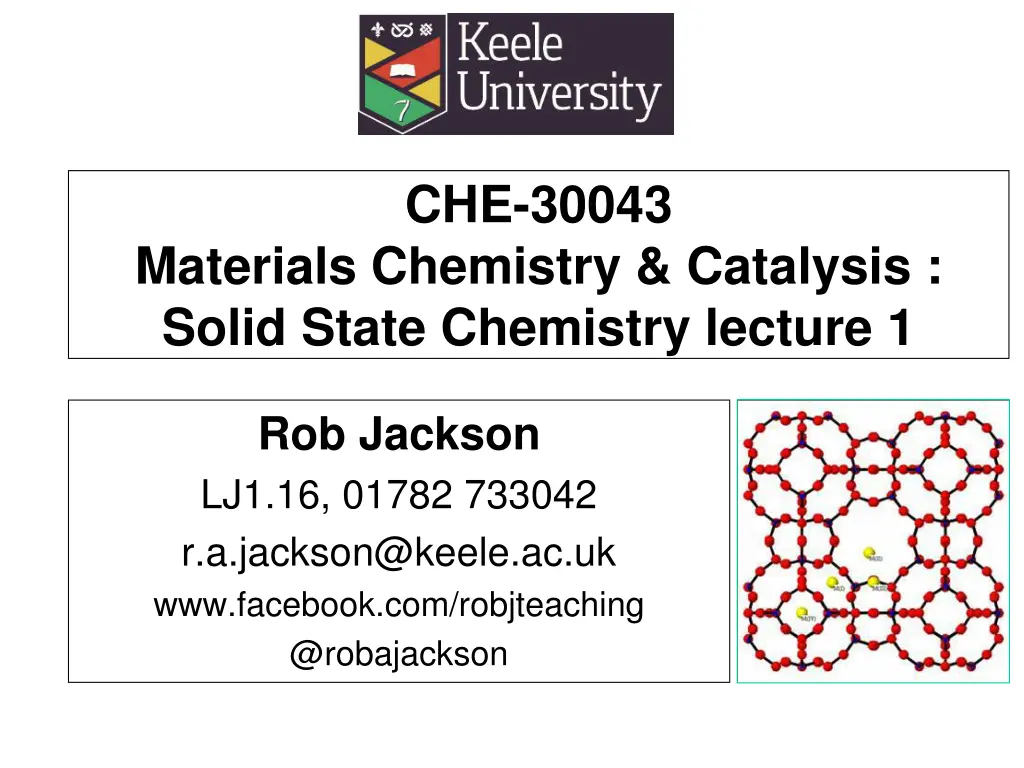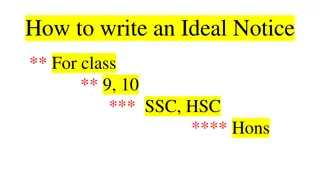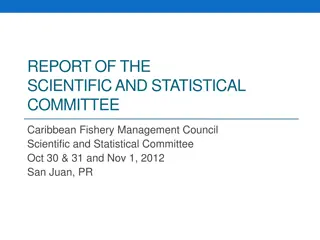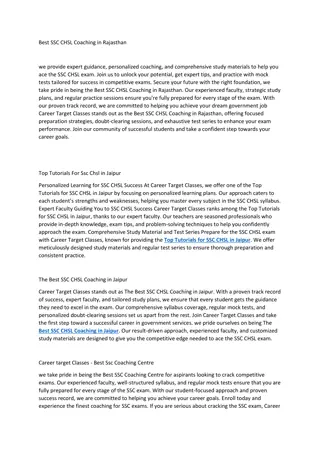
Solid State Chemistry Lecture Summary
Explore key concepts of crystallography, bonding in different structures, and properties correlated with structure and bonding in solid state chemistry. Learn about metal and ionic structures, their characteristics, and examples, as well as electrical conductivity in solids. Recommended background reading materials are also provided for further understanding.
Download Presentation

Please find below an Image/Link to download the presentation.
The content on the website is provided AS IS for your information and personal use only. It may not be sold, licensed, or shared on other websites without obtaining consent from the author. If you encounter any issues during the download, it is possible that the publisher has removed the file from their server.
You are allowed to download the files provided on this website for personal or commercial use, subject to the condition that they are used lawfully. All files are the property of their respective owners.
The content on the website is provided AS IS for your information and personal use only. It may not be sold, licensed, or shared on other websites without obtaining consent from the author.
E N D
Presentation Transcript
CHE-30043 Materials Chemistry & Catalysis : Solid State Chemistry lecture 1 Rob Jackson LJ1.16, 01782 733042 r.a.jackson@keele.ac.uk www.facebook.com/robjteaching @robajackson
Background reading Recommended Reactions and Characterisation of Solids Sandra Dann (RSC Tutorial Chemistry Text No 2 (2000)) Supplementary (detailed) Solid State Chemistry: An Introduction Lesley Smart, Elaine Moore (4th edition, CRC Press (2012)) che-30043 lecture 1 2
Lecture 1 contents 1. Key concepts of basic crystallography Refer to che-20031 slides 2. Bonding in different structures Metals, ionic structures, molecular structures 3. Correlation of structure & bonding with properties 4. Electrical conductivity in solids covalent structures, che-30043 lecture 1 3
Key concepts of basic crystallography Important concepts from che-20031: Unit cells Crystal class Lattice type Bravais lattices Review these! che-30043 lecture 1 4
Metal Structures - Characteristics Most adopt close-packed structures. Bonding is non-directional. This is reflected properties. Cations are surrounded by a sea of valence electrons electrical conductors. in mechanical close packed and che-30043 lecture 1 5
Examples of metal structures Alkali metals tend to adopt the body centred cubic (BCC) structure: 2d view http://www.science.uwaterloo.ca/~cchieh/cact/applychem/metals.html che-30043 lecture 1 6
Other metal structures: hcp and ccp http://www.seas.upenn.edu/~chem101/sschem/metallicsolids.html che-30043 lecture 1 7
Ionic structures - characteristics Structures minimise ionic repulsion. Structures influenced by ionic radii. Strong directional bonding. Valence electrons are involved in ionic bonding (electron transfer). Electrical insulators. che-30043 lecture 1 8
The diversity of structures found http://www.chem.ox.ac.uk/icl/heyes/structure_of_solids/Lecture2/Lec2.html che-30043 lecture 1 9
Some ionic structures - 1 We will consider a few examples to illustrate the diversity of structures. e.g. the metal halide structures, where MX can have at least 4 different structures depending on M and X. NaCl and CsCl why different? che-30043 lecture 1 10
NaCl and CsCl structures compared CsCl Note: CsCl is not BCC why? che-30043 lecture 1 11
Some ionic structures - 2 MX2 also has several forms, but an important structure is the fluorite structure, named after the mineral, fluorite, CaF2. This is an important structure adopted by many technologically important materials, including ZrO2 and UO2. che-30043 lecture 1 12
The fluorite structure: cations at alternate cube centres (shown for MF2) che-30043 lecture 1 13
Covalent Structures Covalently bonded materials. Strong bonds can lead to structures of high strength. Valence electrons involved in shared covalent bonds. Electrical insulators or semiconductors. che-30043 lecture 1 14
Examples of covalent solids The diamond phase of carbon is a good example. Each C atom is bonded to 4 others through sp3 hybrid bonding orbitals, giving a 3-dimensional network Other examples include Ge, Si, B, P, As, Se, Te. che-30043 lecture 1 15
Carbon phases bonding and properties Diamond rigid 3-dimensional (sp3) covalent network with all bonds equivalent. Graphite layer structure covalent (sp2) bonding within each layer, and relatively weak van der Waals forces between the layers. This gives the material its distinct properties. What about C60? che-30043 lecture 1 16
Diamond and graphite structures compared Diamond structure continuous 3d network Graphite structure 2 dimensional layer structure http://www.bris.ac.uk/Depts/Chemistry/MOTM/diamond/diamond.htm che-30043 lecture 1 17
Buckminsterfullerene (C60) From the structure, how many C atoms is each atom bonded to? From this information, what hybridisation would you expect for bonding orbitals? type of the C http://www.chm.bris.ac.uk/motm/buckyball/c60a.htm che-30043 lecture 1 18
Molecular Solids Solids formed from molecules which retain their identity and shape in the solid Structures held together by van der Waals forces and electric multipole moments (depends on symmetry) Bonding is weak low melting points che-30043 lecture 1 19
Examples of molecular solids Classic example is solid CO2, dryice Linear O=C=O molecules in FCC lattice Structure melts (sublimes*) at low temperatures, indicating bonding is weak Other examples solid benzene, etc. * goes from solid to gas phase direct that the che-30043 lecture 1 20
The solid CO2 structure The individual CO2 molecules FCC lattice. The structure is held together by van der Waals forces. Tsub = -78.5 C (194.5 K) (atmospheric pressure) form an che-30043 lecture 1 21
Example: the structure of solid CCl4 CCl4 melts at -23 C (250K). Below this temperature, it forms a simple cubic structure with a CCl4 molecule at each lattice site. Molecules retain their identity in the solid. che-30043 lecture 1 22
Bonding in Solids summarised Metals cations held together by delocalised valence electrons Ionic solids balance of repulsive and attractive interactions Covalent solids covalent bonds between atoms Molecular solids electrostatic interactions non-bonded che-30043 lecture 1 23
Electrical conductivity in solids Does a given solid state material behave as conductor, insulator or semiconductor? How is this related to its electronic structure? We will separately look at: Metals Insulators (ionic solids, covalent solids) Semiconductors (to be defined later) che-30043 lecture 1 24
Electrical Conductivity and Temperature In a metal, conductivity decreases with temperature. Why? In insulators and semiconductors, conductivity increases temperature. Why the difference between metals and insulators/semiconductors? with che-30043 lecture 1 25
Electron conductivity in metals (i) http://www.saburchill.com/physics/chapters/0037.html Electrons in a metal with no current flowing. Valence electrons are free to move, randomly. Electrons in a metal with a current Valence electrons move in the direction of the current flowing. but che-30043 lecture 1 26
Electron conductivity in metals (ii) Why does the electrical conductivity of a metal reduce temperature? with increasing The about positions and get in the way electrons. cations their move lattice of the che-30043 lecture 1 27
Summary of lecture Key concepts from crystallography have been listed. Some metallic, ionic, covalent and molecular structures reviewed. Electrical conductivity in materials has been introduced, with metals as an example. have been che-30043 lecture 1 28





















